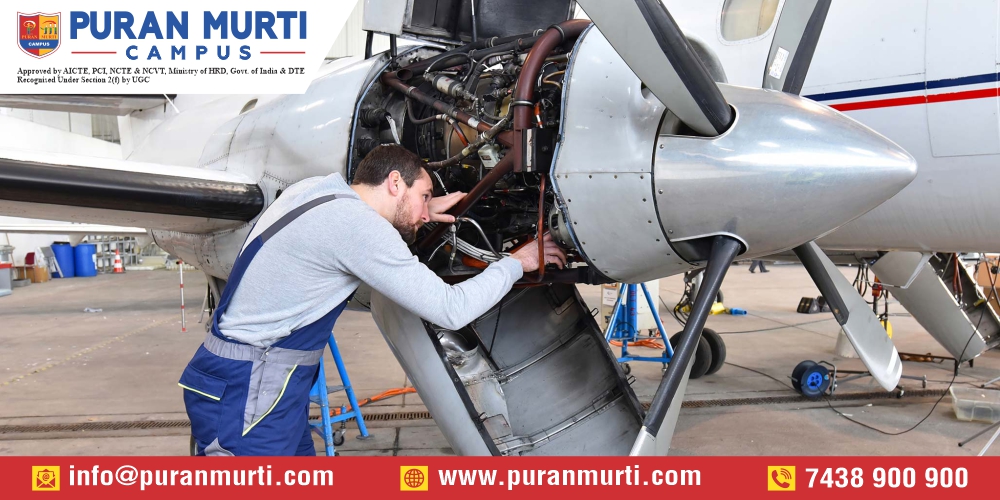The Science of Flight: An In-Depth Look at Aircraft Engineering
Posted on : 6 June, 2024 12:26 pm
Introduction
- Aircraft engineering is a dynamic field dedicated to the design, development, and maintenance of aircraft. It combines principles of aerodynamics, materials science, propulsion, and avionics to create safe and efficient flying machines. This blog explores the fundamentals of aircraft engineering, highlighting key components, technological advancements, and career opportunities. Whether you are an aspiring engineer or simply curious about how planes work, this in-depth look at aircraft engineering will provide valuable insights into the science of flight and the vital role engineers play in the aviation industry.
Understanding Aircraft Engineering
- Aircraft engineering involves the design, development, testing, and maintenance of aircraft. It combines various engineering disciplines, including aerodynamics, propulsion, materials science, and avionics. Engineers in this field work to ensure the safety, efficiency, and performance of both commercial and military aircraft, playing a crucial role in advancing aviation technology and maintaining rigorous safety standards.
Aerodynamics and Flight Mechanics
- Aerodynamics and flight mechanics are fundamental aspects of aircraft engineering. Aerodynamics focuses on how air interacts with the aircraft’s surfaces, influencing lift, drag, and stability. Flight mechanics involves understanding the forces and moments acting on the aircraft during flight, including takeoff, cruising, and landing. Mastery of these principles ensures efficient, safe, and optimal aircraft performance.
Structural Design and Materials
- Structural design and materials are crucial in aircraft engineering. This field involves creating airframes that are lightweight yet strong enough to withstand various stresses. Engineers select advanced materials like composites and alloys for their strength-to-weight ratios and durability. Understanding how these materials behave under different conditions ensures the structural integrity and longevity of the aircraft.
Maintenance and Safety
- Maintenance and safety are critical aspects of aircraft engineering. Regular inspections and preventive maintenance ensure aircraft remain airworthy and operational. Engineers implement rigorous safety protocols to detect and address potential issues before they become serious. This proactive approach minimizes risks, ensuring the safety of passengers and crew while maintaining the reliability and efficiency of the aircraft.
Technological Innovations
- Technological innovations in aircraft engineering are transforming the industry. Advanced materials like carbon composites improve strength and reduce weight. Cutting-edge avionics enhance navigation and safety. Automation and AI-driven systems streamline maintenance and diagnostics. These advancements not only boost efficiency and performance but also contribute to environmental sustainability by reducing fuel consumption and emissions.
Educational Pathways and Skills
- Aircraft engineering offers diverse educational pathways and requires a range of skills. Many engineers pursue bachelor’s degrees in aerospace, mechanical, or aeronautical engineering. Strong mathematical, analytical, and problem-solving skills are essential. Additionally, practical experience through internships or co-op programs is valuable. Continuous learning and staying updated with industry advancements are key to thriving in this dynamic field.
Career Opportunities and Paths
- Aircraft engineering offers diverse career opportunities and paths. Graduates can work in various sectors, including commercial aviation, defense, space exploration, and research institutions. Roles range from aircraft design and manufacturing to maintenance, quality assurance, and aviation management. With experience, engineers can advance to leadership positions or specialize in areas such as avionics, propulsion, or structural design, shaping the future of aerospace technology.
Challenges and Future Prospects
- Aircraft engineering faces several challenges and exciting future prospects. Challenges include addressing environmental concerns, such as reducing carbon emissions and noise pollution, as well as meeting stringent safety and regulatory standards. However, advancements in technology, such as electric propulsion and autonomous flight, offer promising opportunities for innovation and sustainability, driving the future evolution of aircraft engineering.
Conclusion
- In conclusion, aircraft engineering is a multifaceted field at the forefront of technological innovation and advancement. It encompasses various disciplines, from aerodynamics and structural design to avionics and propulsion, shaping the future of aviation. Despite challenges such as environmental sustainability and safety regulations, the industry continues to evolve, driven by a quest for efficiency, safety, and sustainability. With ongoing advancements and a diverse array of career opportunities, aircraft engineering remains a dynamic and rewarding field with boundless possibilities for the future.

